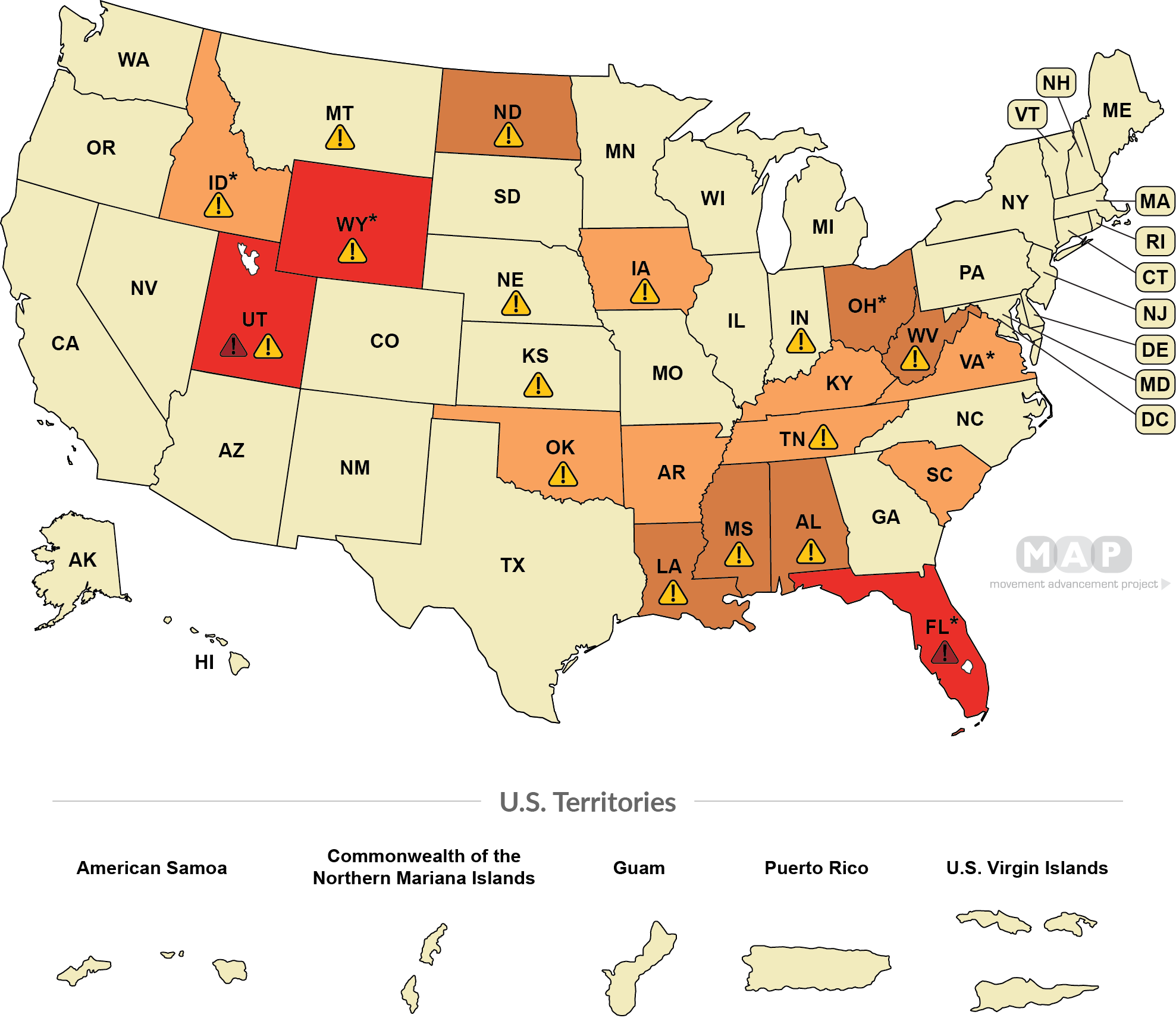These laws prohibit transgender people from using bathrooms and facilities—such as locker rooms, shower rooms, changing rooms, and other sex-segregated spaces—according to their gender identity in certain circumstances or places. All of these policies apply to K-12 school settings, and some apply even more broadly to other government-owned buildings and spaces. This can include bathrooms and facilities in government buildings (e.g., city hall, courthouses, state legislative buildings, and more), colleges or universities, jails or prisons, and even in some cases airports, public parks, and much more. Click "Citations" to find more detail about each state's ban, the places or spaces it covers, and more. Please note that these bans do not apply to, for example, private businesses or other non-government-owned spaces, though these spaces may have their own discriminatory policies.

-
State bans transgender people from using bathrooms and facilities consistent with their gender identity in all government-owned buildings and spaces, including K-12 schools, colleges, and more
(6 states)
-
State bans transgender people from using bathrooms and facilities consistent with their gender identity in K-12 schools and at least some government-owned buildings
(8 states)
-
State bans transgender people from using bathrooms and facilities consistent with their gender identity in K-12 schools
(5 states)
-
No state ban on transgender people’s use of bathrooms or facilities
(31 states , 5 territories + D.C.)
-

State law makes it a criminal offense, in certain circumstances, for transgender people to use bathrooms or facilities consistent with their gender identity
(2 states)
-

State has law or policy
defining “sex” in ways that may impact transgender people’s access to bathrooms or facilities according to their gender identity
(17 states)
*Notes:--Click "Citations" to find more information about each state's ban, the places or spaces it covers, and more information.--In Florida, Montana, Ohio, and Wyoming, the bans apply to at least some private settings. All other bans currently on the books apply only to government-owned settings. See the Citations for more detail.
--In Virginia, the state's ban is via state agency policy (which school districts are required by law to adopt), rather than legislation. However, many school districts are resisting this adoption, and so implementation/enforcement of the ban may vary across the state. Click "Citations & More Information" to learn more.Recommended citation:
Movement Advancement Project. [Year of access]. "Equality Maps: Bans on Transgender People's Use of Public Bathrooms & Facilities According to Their Gender Identity."
https://www.mapresearch.org/equality-maps/nondiscrimination/bathroom_bans.
Accessed [day of access].
Percent of Transgender Population Covered by Laws
*Note: These percentages reflect estimates of the transgender population (ages 13+) living in the 50 states and the District of Columbia. Estimates of transgender people in the U.S. territories or under age 13 are not available, and so cannot be reflected here. Population estimates are from The Williams Institute.
9 % of the transgender population (ages 13+) lives in states that ban transgender people from using bathrooms and facilities consistent with their gender identity in all government-owned buildings and spaces, including K-12 schools, colleges, and more
9 % of the transgender population (ages 13+) lives in states that ban transgender people from using bathrooms and facilities consistent with their gender identity in K-12 schools and at least some government-owned buildings
7 % of the transgender population (ages 13+) lives in states that ban transgender people from using bathrooms and facilities consistent with their gender identity in K-12 schools only
26 % of the transgender population (ages 13+) lives in states that ban transgender people from using bathrooms and facilities consistent with their gender identity in K-12 schools (combines all of above)
74 % of the transgender population (ages 13+) lives in states with no ban on transgender people’s use of bathrooms or facilities




